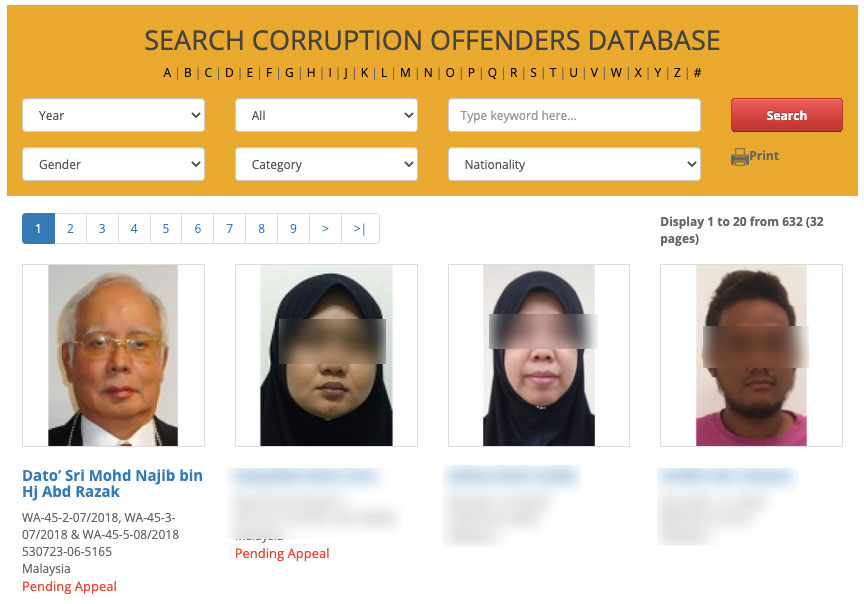MACC Names And Shames Najib On An Online List To Teach M'sians Not To Be Corrupt
The online tool, which acts as name-and-shame database, was created in 2011 by the anti-graft body.
The Malaysian Anti-Corruption Commission (MACC) has listed former prime minister Datuk Seri Najib Razak as a corruption offender on its online database
Najib, who was sentenced to 12 years' jail in the SRC International case for misappropriating RM42 million, is the first person listed on the database among other 623 offenders.
MACC displayed the identification number of the former premier, as well as his case numbers where he was convicted for abuse of power and six counts of money laundering.
The anti-graft body categorised Najib as a 'government employee' and stated that he is currently 'pending appeal' against the verdict made by the Kuala Lumpur High Court.
According to MACC, the purpose of the database is to remind Malaysians not to commit any form of corruption and bribery
"The primary objective of this initiative is to show deterrent measures and to send a clear signal that we are putting war against corruption," MACC wrote on the website.
It said the database serves as an "awareness tool", whereby members of the public and organisations can use it to conduct due diligence before hiring, appointing, or promoting an individual.
"Furthermore, the database also plays a role as an educational tool to prevent other people from committing corruption or bribery," it read.
All the information about the offenders will appear on the database for three years so that the court verdicts will not be the only consequences offenders face.
Back in 2015, MACC dubbed the tool as a name-and-shame database
A spokesperson from the anti-graft body claimed that many developed nations, such as the US, looked up to Malaysia's anti-corruption model as "best practices", reported The Star.
The following year, then Gelang Patah lawmaker Lim Kit Siang suggested MACC include Najib's name into the database, but MACC responded that it would be inappropriate.
"The name-and-shame database was introduced to list the names of people who have been found guilty in corruption-related cases, not those who are being investigated," MACC explained in a statement.
Najib leaving the KL High Court on 28 July after being sentenced to 12 years' jail, but was given a stay of execution of his sentence pending the appeal.
Image via Lim Huey Teng/ReutersThe Star reported that the database was first launched in 2011.


